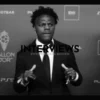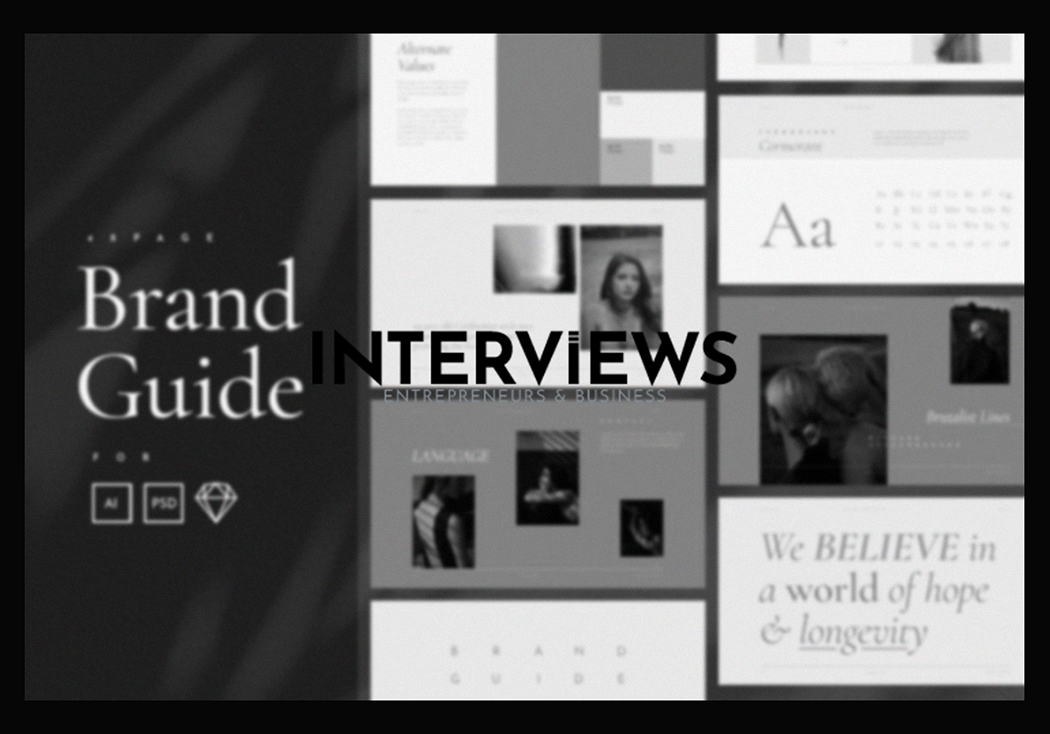Dive Headfirst into Fashion: Your No-Nonsense Guide to Starting a Clothing Line
You have the urge to create. You want to unleash your inner designer. You envision yourself like Coco Chanel or Virgil Abloh. You see fabrics and sketches. You wish to see your designs on runways or Instagram. Starting a clothing line seems glamorous. Reality check: it involves passion and grit, mixed with logistics. But don’t worry! This guide serves as your basic roadmap to navigate the colorful challenge of launching a clothing brand.
The Cold, Hard Cash: Understanding the Costs
Let’s discuss costs. Before dreaming of success, get real about expenses. Launching a clothing line involves various costs. These depend on aiming for an online shop or a big retail store. Let’s dive into the financial aspects, shall we?
Online Clothing Line (The Lean Startup Approach)
Starting small? An online clothing line fits the bill. Even in the digital space, there are costs. Let’s check out some expenses:
Business Plan & Branding: Laying the Foundation
Think of this as your fashion tool. You need a solid business plan. It is your strategic guide. Identify who you will sell to. Shape your brand’s personality. Determine how you’ll promote your brand. You need answers before spending any money.
Design & Development: From Sketchbook to Reality
Got designs in mind? Great! They need to become real. You should create designs and patterns. If you are not a designer, hire someone or use simple design software. Remember, even rough sketches are a start. But professional patterns are essential.
Fabric Sourcing: The Quest for Quality Materials
Fabric holds your clothing together. You need reliable suppliers for fabrics and materials like buttons, zippers, and threads. Quality fabrics uplift your brand. Subpar materials can sink it quickly.
Production & Manufacturing: Making it Real
This is a crucial decision: Do you send designs to a manufacturer? Or will you manufacture in-house? Outsourcing may cost less at first, but in-house production gives more control, often at a higher cost. This choice affects your budget and peace of mind.
E-commerce Platform: Setting Up Shop Online
Your online store acts as your digital space. Make it inviting and user-friendly. Security for transactions is essential. Choose a robust e-commerce platform. Think of it as creating your virtual boutique. Make it stylish, not cluttered.
Marketing & Advertising: Getting Noticed in the Noise
No one will notice stunning designs if you don’t promote them. You must advertise your brand on social media. Use email marketing to keep customers engaged. Consider paid ads to extend your reach. In today’s world, marketing is essential for visibility.
Inventory: Stocking Your Virtual Shelves
You need products to sell. So, get an initial stock of your clothing line. Don’t buy too much at first, particularly when online. Smart inventory management keeps you from having a pile of unsold items and regret.
Large Retail Clothing Line: Stepping into the Bricks-and-Mortar World
Dreaming bigger? A large retail line with stores increases opportunities and costs. Let’s consider the expenses of a physical store:
Rent & Utilities: The Price of Physical Space
Physical stores require rent. Include the cost of leasing space plus utilities like electricity and water. Remember maintenance costs. Things break at the worst times.
Staffing: Building Your Dream Team
You can’t run a store alone. You’ll need sales staff, customer service, and maybe in-store production support. Good employees enhance customer experience, so hire wisely and budget for salaries.
Inventory: Stocking Real Shelves, Real Big
Physical stores need substantial inventory. Invest in enough stock to satisfy customer demand and build attractive displays. Retail requires depth in stock: more styles, different sizes, and greater variety.
Marketing & Advertising: Driving Foot Traffic
Marketing extends beyond the internet. Craft a solid strategy to draw customers to your store. Consider local ads and eye-catching window displays. Maybe host a grand opening party that gains some local media attention.
Equipment: Setting Up Shop
Retail stores need gear. You’ll need display fixtures and point-of-sale systems, along with security systems. These initial costs are vital for creating an attractive shopping environment.
Legal & Insurance: Playing by the Rules
Legal compliance is crucial. Obtain licenses and permits to operate legally. Insurance is also essential. Make sure your business is protected from unexpected events. No one wants a lawsuit or disaster ruining their dreams.
Factors That Flex Your Budget: The Cost Influencers
Certain factors can greatly affect your costs. Being aware of these can help you navigate your clothing line journey financially.
Location, Location, Location: Geography Matters
Location is critical for retail. Costs vary greatly based on where you operate. Prime city areas demand high rents, while suburban spots may offer lower costs. Online businesses have less geographical impact but must consider logistics.
Scale: Big Dreams, Big Budgets
Your ambitions influence your costs. A larger business requires greater investments in inventory and marketing. Smart scaling is vital; avoid outgrowing finances too quickly.
Concept: Defining Your Clothing Niche
Your clothing line type determines costs. Casual wear differs from high-end fashion or niche specialty items. Each has unique production costs and marketing strategies. Your chosen concept shapes your costs.
Production Method: In-House vs. Outsourcing
Your production method significantly impacts expenses. Outsourcing might seem cheaper initially. However, in-house control ensures higher quality but requires considerable upfront investment. Choose wisely based on costs and control.
Marketing Strategy: Spending Smartly to Get Seen
Your marketing can affect expenses immensely. A targeted strategy brings high returns from smaller budgets. A haphazard approach may waste funds without achieving results. Spend wisely by being strategic in marketing.
From Zero to Fashion Hero: Steps to Launch Your Brand
Cost realities are clear. Now, let’s outline your journey from idea to brand. Think of these steps as essential milestones on your path to fashion success.
Know Thy Customer: Define Your Target Market
Who is your audience? Identify who you design for. Decide on your target market, the group you want to reach. Are they Gen Z trendsetters or eco-friendly millennials? Understanding your audience informs all your decisions.
Business Model Blueprint: How Will You Operate?
Choose your business model. Are you online only? Will you have physical outlets? Focus on direct-to-consumer or wholesale to boutiques? Your model sets the framework for operations and revenue streams. Pick a model that aligns with your resources.
The Business Plan Bible: Your Strategic Document
Create that crucial business plan. It’s not just for funding; it keeps you focused. Write down your mission, market analysis, projections, and marketing strategies – outline everything necessary.
Treat it as your business bible.
Brand Identity: Crafting Your Fashion Persona
Create your brand identity. This is the heart of your brand. It is more than a logo; it defines your brand’s personality and values. What emotion should it evoke? Sophisticated? Edgy? Playful? Make sure it connects with your target market.
Design Magic: Bringing Clothes to Life
Design products. This is where creativity shines. Sketch, drape, and explore. Whether you design alone or collaborate, this phase shapes your clothing line. Create pieces that are not just appealing but also functional to your target market.
Curated Collections: Telling a Fashion Story
Develop collections. Avoid launching single pieces; think in themes. A collection tells a cohesive story and offers various styles in your brand’s aesthetic. Collections create anticipation and encourage multiple purchases, increasing sales. Think seasonal or themed collections.
E-commerce Emporium: Setting Up Your Digital Storefront
Set up an online store. Even if you want physical shops later, starting online is smart. Choose an e-commerce platform that fits your skills and budget. Make it visually striking and easy to use on mobile devices. Your online store presents the first brand impression.
Digital Shout-Out: Marketing Your Brand Online
Market your clothing brand online. Today, online marketing is essential. Use social media, SEO, influencer partnerships, and ads to connect with your audience. Create engaging content that tells your story and showcases your clothing line. Get digital to grow.
Starting on a Shoestring: Budget-Friendly Beginnings
Tight budget? No problem. You don’t need a trust fund to start a clothing line. There are budget-friendly options today.
Budget-Friendly Business Models: Lean and Mean
Explore low-cost options like dropshipping, print-on-demand, or service-based roles. These models reduce upfront costs and inventory risks. With dropshipping, you sell without holding inventory. Print-on-demand means producing items only when ordered.
Dropshipping: Inventory? What Inventory?
Dropshipping removes the need for inventory. You partner with suppliers who handle stock and shipping. Focus on marketing and customer service. This lowers risk and initial investment, but profit margins may shrink due to less control over quality.
Print-on-Demand: Design and Sell, No Stockpile Needed
Print-on-demand allows custom product creation with minimal upfront costs. You create designs; they handle production and shipping as orders come in. It helps test designs without heavy inventory investments but may raise per-item costs.
Service-Based Businesses: Leverage Your Fashion Expertise
Service-based ventures are excellent entry points. Offer personal styling or wardrobe consulting. Build your brand, gain knowledge, and earn while planning your full clothing line launch. It uses existing skills and has low entry barriers.
Legally Legit: Navigating the Legal Landscape
Legal matters are crucial, though not glamorous. Don’t overlook them. Addressing legal needs protects your brand properly.
LLC: Limited Liability Love
An LLC isn’t mandatory to start, but it’s advisable. It provides liability protection. An LLC keeps personal assets separate from business debts. If legal issues arise, personal savings remain secure.
Trademark Time: Protecting Your Brand Name
Trademark your name and logo for protection. This avoids confusion from others using your identity. Here’s how to navigate the trademark process:
Step 1: Trademark Search – Detective Work
Conduct a trademark search before applying. Ensure your name isn’t already taken, especially in clothing. Use the USPTO website to avoid conflicts.
Step 2: Choose Your Trademark Class – Category Clarity
Select the right trademark classbased on industry type. Choose classes related to apparel to ensure relevant protection.
Step 3: Application Prep and Submission – Paperwork Power
Prepare and submit your trademark application. Complete paperwork and pay relevant fees. Consider hiring a trademark attorney for help with complex cases.
Step 4: Respond to USPTO Actions – The Waiting Game (and Potential Hurdles)
Respond to USPTO actions promptly. They may have questions or objections during review. Timely responses keep the application process moving forward.
Step 5: Registration and Maintenance – Trademark Tenure
Register and maintain your trademark once approved! It requires ongoing use in commerce and paying renewal fees periodically to keep it active.
Business Registration: Officially Official
Register your business name and type (LLC, sole proprietorship). This legally recognizes your business. Check specific regulations for your state as legitimacy is key for banking and taxes.
Profit Potential: Making Money in Fashion
Let’s discuss profitability. Can you make money selling clothes? Yes, but it demands effort. Success depends on multiple factors.
Ingredients for Profitability: The Recipe for Revenue
A clothing line can be profitable with good management and market understanding. Profitability goes beyond pretty designs; it requires solid business practices.
Well-Managed Operations: Run it Like a Business, Not Just a Hobby
Efficient management is essential. Streamlined operations, inventory management, and cost control matter. Treat your clothing line as a serious business for profitability.
Meeting Market Needs: Give the People What They Want (and Need)
Understand your target market’s needs clearly. Design clothes they want to buy based on their preferences, sizes, and prices. Market relevance drives sales.
Precise Product Pricing: The Goldilocks Zone of Pricing
Product pricing needs accuracy. Set prices too high, and customers flee; too low, and margins vanish. Find a price point that is both competitive and reflective of your brand value.
Effective Marketing Strategies: Getting the Word Out, the Right Way
Effective marketing is essential. Reach your target audience where they are online or offline using various channels. Employ social media, emails, ads, and PR for brand awareness and sales growth.
Maintaining Efficient Operations: Streamlining for Success
Efficacy impacts your profits directly. Minimize waste, optimize production, and manage supply chains effectively. Efficiency reduces costs and enhances profitability.
Most Profitable Avenues: Where the Big Bucks Are
Certain clothing lines show higher profitability potential. Let’s examine high-potential avenues in fashion:
High-End & Branded Stores: Premium Prices, Premium Profits
High-End & Branded Stores can yield high profits with elevated markups.
Higher Markups: The Luxury of Pricing Power
Higher Markups: These stores charge more for exclusive products. Luxury brands benefit from significant price premiums, leading to satisfactory margins.
Brand Value: The Power of Perception
Brand Value: Strong brand recognition is priceless. Customers pay more for trusted names. Building equity enhances pricing power and customer loyalty over time.
Reselling Vintage and Second-Hand Clothing: Sustainable and Savvy
Reselling Vintage and Second-Hand Clothing is growing fast. It supports sustainability and attracts niche markets.
Sustainability Focus: Eco-Conscious Consumers
Sustainability Focus: It attracts a growing group of eco-friendly buyers. Second-hand fashion lowers waste and appeals to eco-conscious shoppers. Sustainability shifts from being a trend to a profitable venture.
Niche Market: Specialization Sells
Niche Market: Target specific styles, decades, or designers. Vintage and second-hand can be broad, but specializing in areas like vintage 1950s dresses or designer handbags attracts loyal customers.
Platforms: Digital Marketplaces for Vintage Finds
Platforms: Use online marketplaces like eBay, Poshmark, or create your website. These platforms help reach a diverse audience for vintage and second-hand. Utilize existing options or make your e-commerce vintage shop.
Niche Categories: Specialized Clothing, Steady Demand
Niche Categories see consistent demand. There are specialized sectors.
Specialized Products: Catering to Specific Needs
Specialized Products: Focus on particular clothing items, like chef jackets, uniforms, or sportswear. Meet industries with specific clothing demands. Less trendy clothing sells well due to its utility.
Strong Demand: Industries with Ongoing Needs
Strong Demand: Focus on sectors facing a constant need for specific clothing items. Uniforms, workwear, and specialized athletic gear find steady markets, less affected by changing fashion trends.
Custom Print-on-Demand (POD): Personalized Profits
Custom Print-on-Demand (POD) mixes personalization with low risk.
Low Initial Investment: Start Small, Scale Smart
Low Initial Investment: Begin with little inventory, producing only as orders arrive. POD cuts inventory issues and drastically lowers starting costs. It’s great for testing designs without risking large amounts of money.
Design Flexibility: Unleash Creativity, Offer Customization
Design Flexibility: Allow customers to personalize with unique designs. Personalization is appealing. Customers want items that stand out, and POD supports scalability.
Eco-Friendly Clothes: Green is Gold
Eco-Friendly Clothes benefit from high demand for sustainable options.
Growing Market: Sustainability Sells
Growing Market: More shoppers are interested in sustainable or organic clothing. Eco-centric buyers are a growing demographic. There is readiness to pay more for ethical fashion.
Premium Goods: Ethical and Expensive (in a Good Way)
Premium Goods: Organic fabrics and ethical production can charge higher prices. Clothing made sustainably often uses quality materials, justifying higher prices and drawing ethical consumers.
Kidswear: Tiny Clothes, Big Market
Kidswear is a surprisingly profitable sector with steady demand.
Constant Demand: Kids Grow, Clothes Shrink (for Them, Not Your Profits)
Constant Demand: Kids grow fast, needing new outfits regularly. Unlike adult wear, kidswear has guaranteed repeat sales due to rapid growth. Parents buy clothes constantly for their kids.
Lucrative Niche: Parents Spend on Their Offspring
Lucrative Niche: Parents seek stylish and durable clothing for their kids. Many prioritize quality and style, creating a profitable niche for well-made kidswear.
No Experience? No Problem: Starting From Scratch
No background in fashion? No worries. Experience is not necessary. Here’s how to navigate the fashion world, even as a beginner.
Business Blueprint for Beginners: Plan to Succeed
Create a Business Plan: Crucial when starting without industry knowledge. Your plan serves as your roadmap.
Market Research: Know Your Battlefield
Market Research: Find your audience, study competitors, and clarify your unique proposition. Understand who buys from you, who else sells to them, and why your brand stands out.
Define Your Niche: Stand Out from the Crowd
Define Your Niche: Target a specific style or price to differentiate yourself. Narrow your focus to avoid getting lost in the market. Specialization benefits your business.
Brand Identity: Create Your Brand Persona
Brand Identity: Develop a name, logo, and aesthetic for your audience. Your brand identity creates first impressions. Make it noteworthy and consistent across all platforms.
Financial Projections: Numbers Matter, Even in Fashion
Financial Projections: Estimate starting costs, production expenses, and expected revenue. Numbers matter to everyone. Realize your financials – costs, revenues, and profits – to guide your decisions.
Design and Production Pathways for Newcomers
Design and Production looks challenging without experience, but there are accessible paths.
Design: Collaborate or Click and Create
Design: If design skills are lacking, collaborate with a freelance designer or use platforms like Canva or Adobe Illustrator. Not everyone needs to be a designer. Work with professionals or utilize simple online tools to express your ideas.
Fabric Sourcing: Research and Select Wisely
Fabric Sourcing: Discover high-quality fabrics compatible with your brand and audience. Knowledge about fabrics can be acquired. Review fabric types, suppliers, and qualities. Don’t compromise on fabric; it influences brand image.
Production: Choose Your Production Partner
Production: Look into print-on-demand options, dropshipping, or alliances with makers. Your production method relates to your budget, scale, and need for control. Evaluate each option’s pros and cons.
Online Presence & Marketing for the Digital Age
Online Presence & Marketing are vital, especially for new brands raising awareness.
E-commerce Platform: Your Digital Storefront
E-commerce Platform: Launch an online shop using Shopify, Etsy, or a custom site. Select a user-friendly e-commerce platform that still allows growth. Shopify, Etsy, or custom sites all offer advantages and challenges.
Social Media: Connect and Convert
Social Media: Create a strong online presence to engage future customers and advertise your line. Use social media as your loudspeaker. Interact with your followers, showcase your items, and foster community around your brand.
Marketing Strategy: Plan Your Promotion
Marketing Strategy: Formulate a method to reach your audience via social media, email marketing, and other paths. Marketing requires more than beautiful images. Develop a detailed plan covering channels, content, and promotions.
Legal and Financial Foundations for Starters
Legal and Financial matters can feel daunting, but they are crucial for sustainable operations.
Business Registration: Make it Official
Business Registration: File your business name and structure (LLC, sole proprietorship, etc.). Establishing legality enhances trust and credibility. Register your business correctly from day one.
Pricing Strategy: Price it Right, Profitably
Pricing Strategy: Set competitive prices for your clothing line that remain profitable. Pricing involves both creativity and analytics. Balance being competitive and profitable. Understand competitors’ prices to set effective prices.
Payment Processing: Secure and Seamless Transactions
Payment Processing: Establish secure payment methods for your online shop. Reliable payment processing is vital for e-commerce success. Opt for trustworthy gateways to build customer confidence.
Continuous Improvement: Evolve and Excel
Continuous Improvement sustains long-term success in the ever-evolving fashion field.
Customer Feedback: Listen and Learn
Customer Feedback: Seek and respond to feedback actively to enhance products and services. Feedback is precious. Pay attention to what customers say—both good and bad—and refine your offers accordingly.
Stay Updated: Fashion is a Moving Target
Stay Updated: Follow current fashion trends and marketing techniques. Fashion trends change rapidly. Keep learning about new trends, tools, and marketing to remain competitive.
Network: Connect, Collaborate, Conquer
Network: Interact with fellow fashion entrepreneurs and industry pros. Networking broadens knowledge, opens collaboration doors, and provides support in a competitive sector. Connect with others in fashion.
Beginner’s Boost: Pro Tips for New Fashion Founders
Start Small: Baby Steps to Big Dreams
Start Small: Avoid heavy investments initially. Launch a limited product line and expand as you gain expertise. Test your ideas. Start small with a capsule collection or small range. Expand as you learn.
Focus on Quality: Quality Over Quantity, Always
Focus on Quality: Emphasize materials and craftsmanship to create a strong reputation. Quality counts. Prioritize fabric, construction, and finishing touches. Quality earns trust and loyalty.
Be Patient: Fashion Success Takes Time
Be Patient: Creating a successful clothing line takes significant time and effort. Don’t get discouraged by challenges. Achieving success in fashion is a journey requiring patience.
Setbacks are learning opportunities. They are not failures.
Learn from Others: Stand on the Shoulders of Giants
Learn from others. Study successful clothing brands. Identify what makes them stand out. Do not reinvent the wheel. Examine their strategies, branding, and customer engagement. Learn from their wins and mistakes.
Collection Composition: How Many Pieces to Start?
Wonder how many pieces your first collection should have? There is no single answer. Here is some practical guidance:
Starting Lineup: Aim for Variety, Not Overwhelm
When you launch, aim for a concise collection. Nine pieces are a good starting point. This gives customers decent choice without overwhelming you with production issues. Twelve looks polished and professional. More than twelve may be too much for a startup.
Styles vs. Pieces: The Nuance of Numbers
Nine pieces can mean three styles in three colors each. This offers color variety while keeping the styles manageable. For womenswear, starting with 3 to 8 styles is best for a first collection. Focus on quality designs and cohesive styling, rather than quantity.
Brand Building Blueprint: Beyond the Clothes
Building a brand requires more than designing clothes. It needs an identity, a story, and a connection with your audience.
Know Your Tribe: Identify Your Target Audience (Again!)
Identify your target audience. This remains crucial. Who are you trying to reach? What are their needs and desires? Understand your audience’s lifestyle, values, and fashion preferences. This shapes your brand strategy.
Core Values and Mission: The Heart of Your Brand
Define your brand’s core values and mission. What does your brand stand for? What is its purpose? Authenticity, sustainability, empowerment? Your values guide brand actions and connect with value-conscious consumers.
Brand Story Magic: Weaving Your Narrative
Create a unique brand story. What is your brand’s origin? What inspired this clothing line? Stories connect emotionally with customers. Share your brand’s journey, values, and vision.
Visual and Verbal Consistency: Branding Harmony
Develop a consistent visual identity and voice. Design your logo and assets consistently. Visuals create recognition. Brand voice shapes personality. Consistency in visuals and voice builds a cohesive image.
Brand Immersion: Weave Branding into Everything
Apply these elements to all interactions. Use your brand’s identity consistently across all marketing materials, websites, social media, and customer interactions. Ensure that every touchpoint reflects your brand identity. Consistency builds trust.
Starting a clothing line is a thrilling journey. It combines creativity and business effort. With this guide, you can navigate the fashion landscape. Launch your brand and become the next big name in fashion. Go forth and design your destiny!





